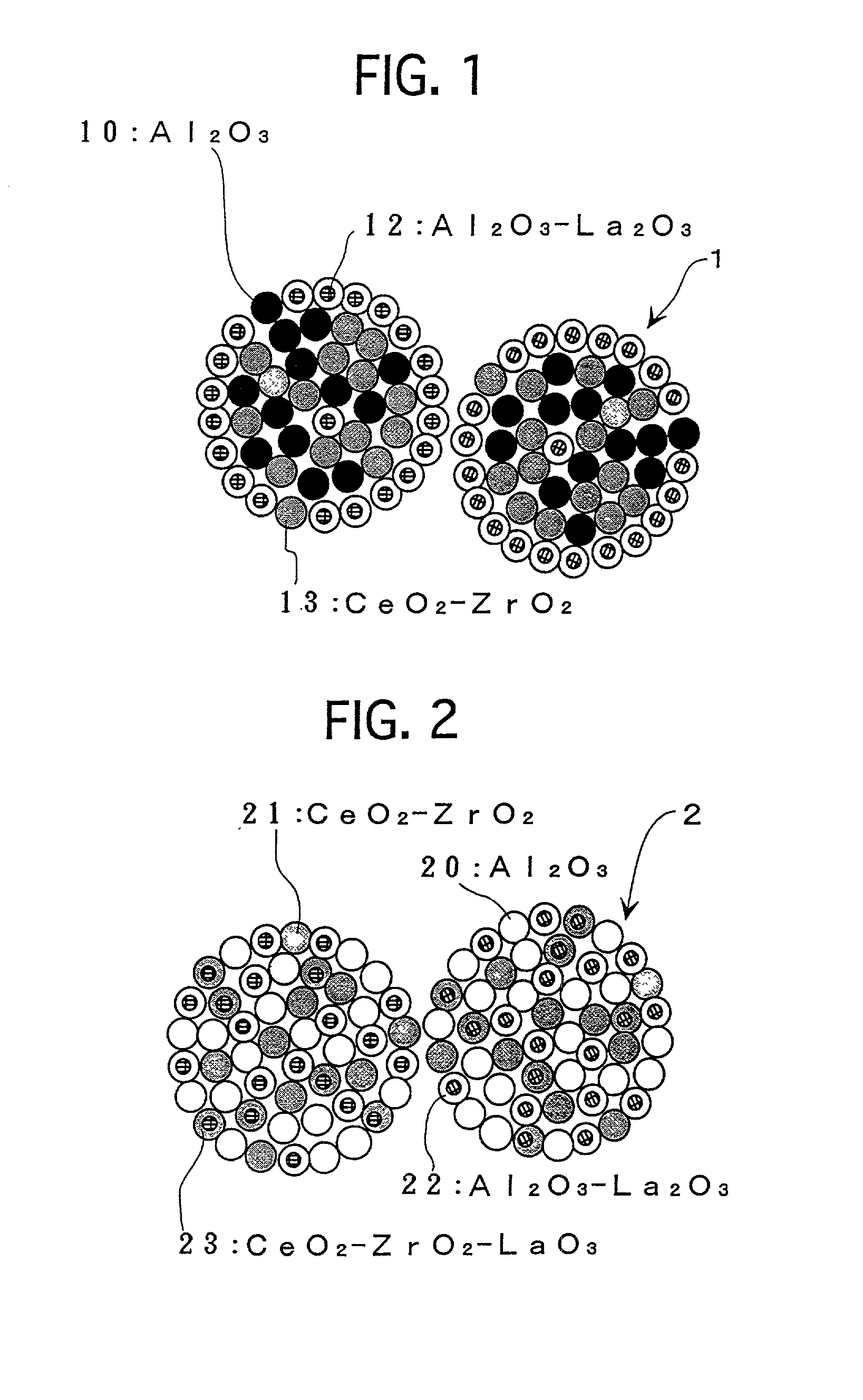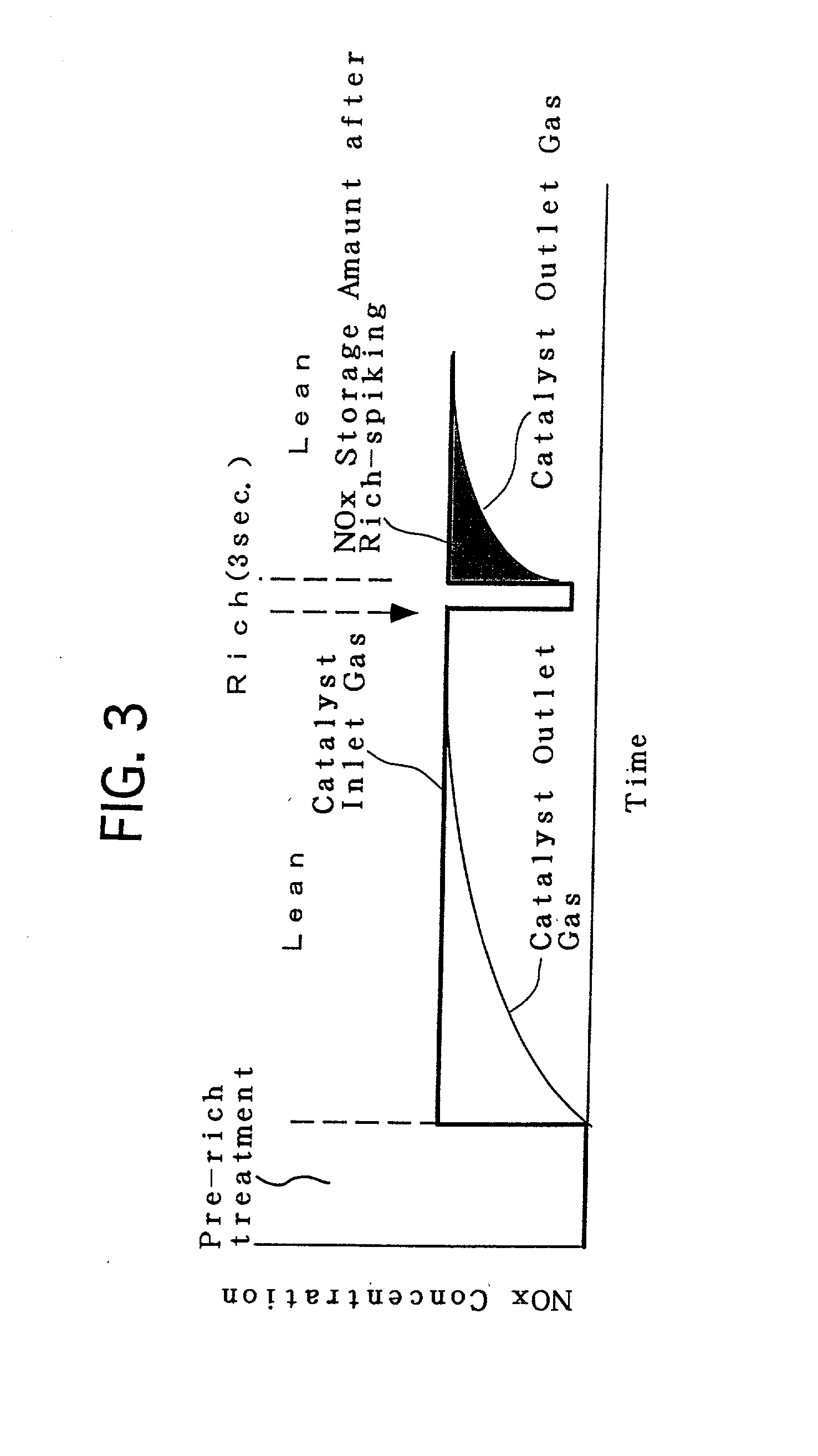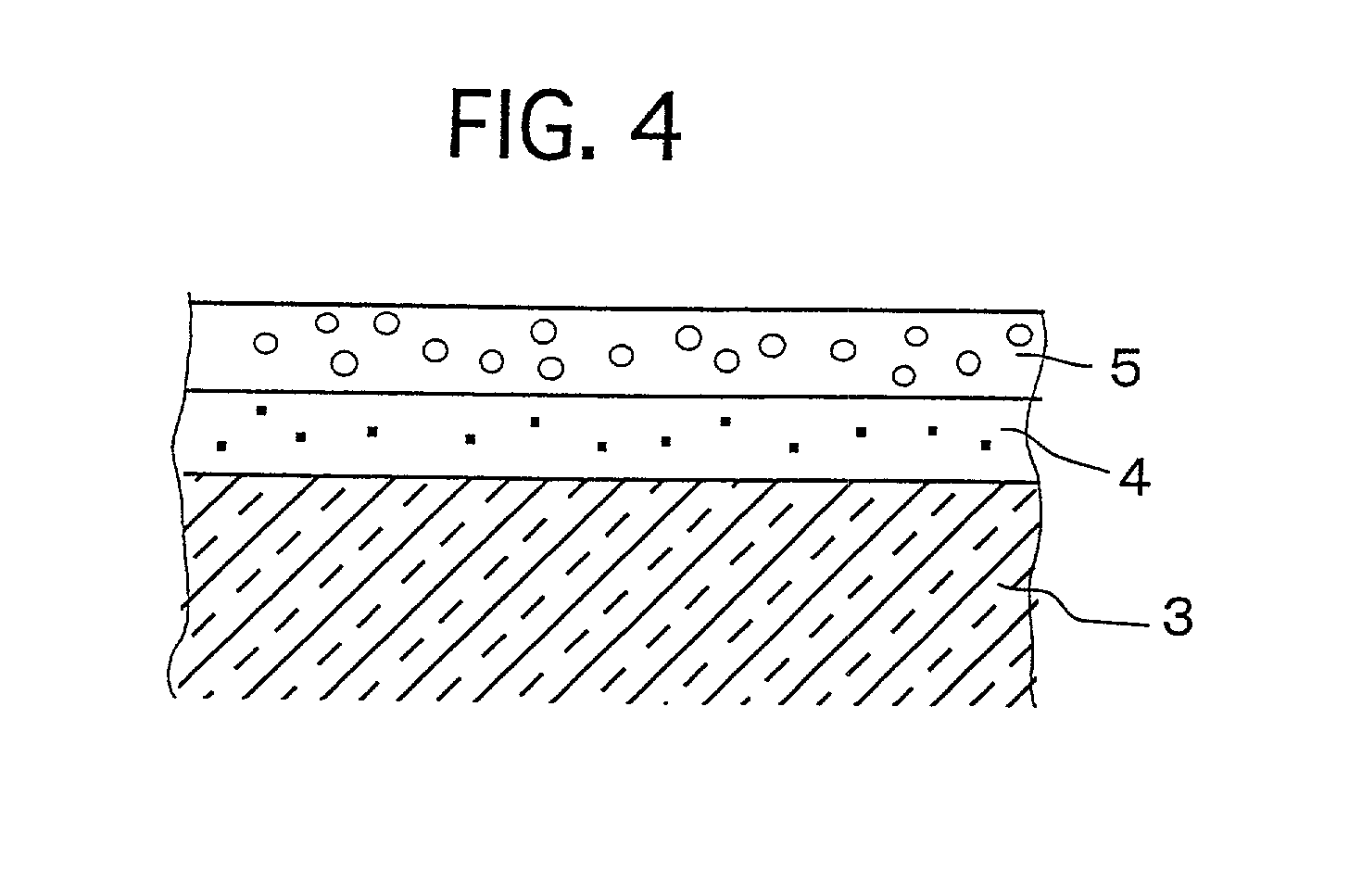Composite oxide, process for producing the same, catalyst for purifying exhaust gas, and process for producing the same
- Summary
- Abstract
- Description
- Claims
- Application Information
AI Technical Summary
Benefits of technology
Problems solved by technology
Method used
Image
Examples
example no.2
EXAMPLE NO. 2
[0200] Except that an aqueous solution "A" and an aqueous solution "B", whose compositions are set forth in Table 1, were used, a composite oxide powder was prepared in the same manner as Example No. 1.
[0201] The resulting composite oxide powder was observed with an FE-TEM, and was analyzed by an EPMA. As a result, similarly to Example No. 1, it was found to comprise agglomerated particles, which had an average particle diameter of about 10 .mu.m. The agglomerated particles were constituted mainly by primary particles, being composed of Al.sub.2O.sub.3, primary particles, being composed of CeO.sub.2--ZrO.sub.2, and primary particles, being composed of Al.sub.2O.sub.3--La.sub.2O.sub.3. The CeO.sub.2--ZrO.sub.2 primary particles were distributed more in the surface side of the agglomerated particles. The Al.sub.2O.sub.3--La.sub.2O.sub.3 primary particles were distributed more in the inner portion of the agglomerated particles.
[0202] According to the results obtained by th...
example no.3
EXAMPLE NO. 3
[0204] An aqueous solution "A" was prepared by solving 1.0 mol of cerium nitrate hexa-hydrate, 1.0 mol of zirconyl oxynitrate di-hydrate and 124 g of hydrogen peroxide water, having a concentration of 30% by weight (equivalent to a content of 1.1 mol as H.sub.2O.sub.2), in 2,500 cm.sup.3 of pure water.
[0205] An aqueous solution "B" was prepared by solving 9.4 mol of aluminum nitrate nona-hydrate and 0.12 mol of lanthanum nitrate hexa-hydrate (La(NO.sub.3).sub.3.6H.sub.2O) in 2,500 cm.sup.3 of pure water.
[0206] Except that the aqueous solution "A" and the aqueous solution "B" were used, a composite oxide powder was prepared in the same manner as Example No. 1. The resulting composite oxide powder was observed with an FE-TEM, and was analyzed by an EPMA. As a result, similarly to Example No. 1, it was found to comprise agglomerated particles, which had an average particle diameter of about 10 4 .mu.m. The agglomerated particles were constituted mainly by two primary parti...
example no.4
EXAMPLE NO. 4
[0209] Except that an aqueous solution "A" and an aqueous solution "B", whose compositions are set forth in Table 1, were prepared in the same fashion as Example No. 3 to use, a composite oxide powder was prepared in the same manner as Example No. 1.
[0210] The overall composition of the resulting composite oxide powder was the same as that of Example No. 3. According to the results of an observation with an FE-TEM and an analysis with an EPMA, however, it was found that primary particles, being composed of CeO.sub.2--ZrO.sub.2, were distributed more in the surface of the agglomerated particles, and that primary particle, being composed of Al.sub.2O.sub.3--La.sub.2O.sub.3-, were distributed more in the inner portion of the agglomerated particles.
[0211] According to the results obtained by the EPMA analysis, the surface-side CeO.sub.2 content was 75 mol % with respect to the total CeO.sub.2 content. The inner-portion La.sub.2O.sub.3 content was 75 mol % with respect to th...
PUM
| Property | Measurement | Unit |
|---|---|---|
| Angle | aaaaa | aaaaa |
| Diameter | aaaaa | aaaaa |
| Diameter | aaaaa | aaaaa |
Abstract
Description
Claims
Application Information
 Login to View More
Login to View More - R&D
- Intellectual Property
- Life Sciences
- Materials
- Tech Scout
- Unparalleled Data Quality
- Higher Quality Content
- 60% Fewer Hallucinations
Browse by: Latest US Patents, China's latest patents, Technical Efficacy Thesaurus, Application Domain, Technology Topic, Popular Technical Reports.
© 2025 PatSnap. All rights reserved.Legal|Privacy policy|Modern Slavery Act Transparency Statement|Sitemap|About US| Contact US: help@patsnap.com



